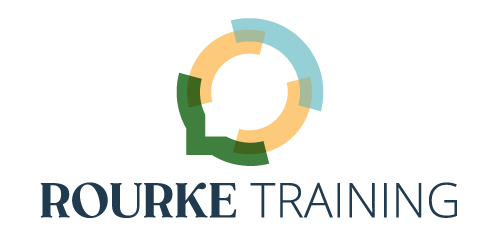Murphy’s law says anything that can go wrong will go wrong, usually at the worst possible moment. When you prepare your content as a series of chunks, you’ll be ready for anything.
Chunks – breaking your overall content into smaller units – are familiar to anyone who reads a lot of online content, like this blog, for example. Online writers typically use short paragraphs and subheaders to make content easier to scan and absorb.
Chunks are also at the core of many teaching pedagogies. My writing classes involve much more hands-on practice than many other subjects, but even my literature classes aren’t straight-up lectures. I want discussion in groups, time for free writing and for practicing skills, and space in the schedule for silence, too. Each of those chunks has a specific purpose, and I can use them in whatever order best suits the day’s goals.
Since class prep means I’m already thinking about 3-4 chunks across a 90 minute period, I’m generally less worried about the unknown unknowns that will affect class on any given day. As a college professor in the Boston area, I know that both the weather and major sports events (Go Celtics! NBA Championship #18 and Duck Boat Victory Parade tomorrow!) can wreak havoc on attendance and attention, including my own. Deadlines, illness, and life in general affect everyone’s focus.
Unstable weather and sports dynasties aside, the intersection of clients, site visits, and technology are another whole level of “I didn’t see that coming!” Kirsten’s had it happen to her, twice.
How Chunks Saved Kirsten’s Trainings
Years ago, Kirsten had a European client tell her upon arrival at their site that she needed to start with the material that usually comes at the end of the software training program. The network speed was fine at the start of the day, while the Europe-based employees were the only ones using the system. When their American counterparts signed on several hours later, the trans-Atlantic system slowed down. Given her content, the client explained, teaching the later material first would be better for attendees since they would avoid glitches and load time lags.
A different client during that time frame informed Kirsten that they only had 20 minutes to give her for a one-on-one session that had been scheduled to last 4 hours. The client was a top-level executive with a busy schedule and the training was time-sensitive. Rescheduling wasn’t an option, and, to be honest, even if that particular session could have been rescheduled, that executive was unlikely to have a 4 hour block for the full training anyway.
Did Kirsten panic in either of these situations? Nope (although she did scream into a pillow for a little bit). For the first client, she spent some time resequencing the training material, and everything went smoothly. For the second, having her material in chunks meant that she could pull the essential pieces from each one for a bird’s eye view of the training. She had the flexibility she needed to respond to unexpected developments.
Cognitive Load Theory Explains Why Chunks Work
Cognitive Load Theory (CLT) is a framework for understanding how information moves from working memory to long term memory and what factors affect that transfer.”Cognitive load” is the amount of mental resources required for any given task. Factors which affect cognitive load might be intrinsic to the material, such as the complexity of the subject, external, such as needing to concentrate while in a noisy space, or germane, which is the effort to link new and existing information.
The three types compete for your brain’s limited resources.
Considering CLT is helpful for teaching and training. For example, reducing external cognitive load is particularly important for material with a high intrinsic load. Chunks help reduce extrinsic load by deliberately giving the learner a chance to let focus lapse and resume without missing information.
Studies by Pass and van Merriënboer (2020) and Strohmaier, et al. (2023) examine how changes to intrinsic load might improve learning outcomes. The earlier study looked at methods such as collaboration, gesturing, and providing motivational cues for managing and maximizing working memory. The later study focused on the effect of linguistic modifications on cognitive load. These modifications included simpler vocabulary and sentence structure, elaboration of concepts when a term is introduced, and personalization.
When your content is in chunks, you can consider what your audience is likely to already know about your topic, the complexity of your presentation, and any external factors that might affect your presentation. Modifying part of a presentation to meet your audience’s needs is far easier than modifying an entire session.
Microlearning and Digital Badges are Chunks for Online Learning
Even if you’re not a teacher or technical trainer, you’re probably familiar with learning content in chunks. Microlearning and digital badges are related, though not interchangeable, approaches for offering online content. They focus on very specific skills and short sessions that the learner accesses on their own schedule.
Both microlearning and digital badges have become increasingly popular in the last 2 decades, as technology and various social shifts have strengthened online education delivery. Social media, especially platforms for professionals such as LinkedIn, showcase your ongoing mastery through mini-courses like these.
The expansion of online gaming to new audiences has played a role as well. Digital badges, in particular, benefit from game theory. Gamification and digital badges contribute to learners’ desire for acknowledgement, their motivation, their competitiveness, and their accountability.
Chunks Help Public Speaking
When speakers organize their material into chunks, everyone benefits.
Think about it – you want your audience to absorb your message, regardless of whether you’re explicitly in a teaching or training role. Dividing your content into chunks helps them learn, remember, and apply your key points, which is more difficult to do with an unbroken tidal wave of information.
Chunks help you, the speaker, too. Smaller units of information are easier both to remember, especially if you’re nervous, and to shuffle or cut if necessary. They also provide more organic opportunities to pause your presentation and check your audience’s understanding.
For me, the pause & check in with an audience is crucial for engagement, and engagement is the foundation of learning. Starting with chunks helps you avoid arbitrary check in points.
How About You?
Do you actively think about chunking your material when preparing a presentation or training session? How do you decide where to divide material into separate units? In my classes, I like to harness the energy of the start for class for group discussion, then move into analysis. I’ll often use a short free writing session as a transition between chunks, as well.
Where have you encountered chunks, microlearning, or badges? Do you find this style of content delivery particularly helpful? Why or why not?
Tell us about it in the comments.
Check Out Our YouTube Channel
The Rourke Training – Ongoing Mastery YouTube channel has a bit of something for everyone. Go there to get Kirsten’s take on examples of public speaking, as well as reflections on her entrepreneurial journey. The channel is also the home of the podcast Kirsten and Kellie produced for 5 years, Ongoing Mastery: Presenting & Speaking, which covers everything connected to continually improving your craft of being a public speaker, from interviews and mini-coaching sessions with guests to conversations between Kirsten and Kellie.
Come join us.
Cheers,
Kellie


